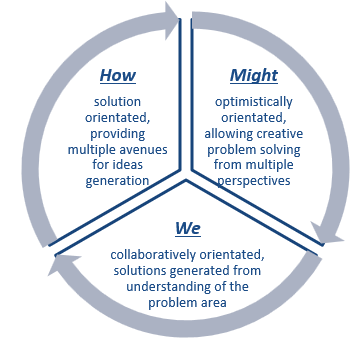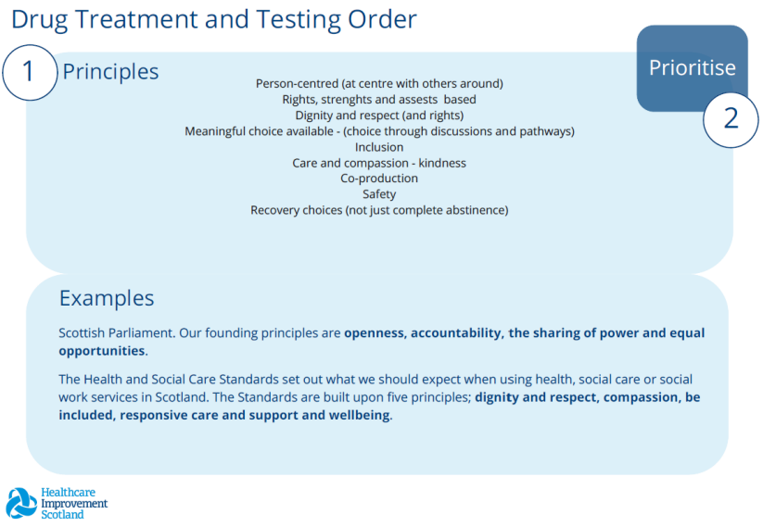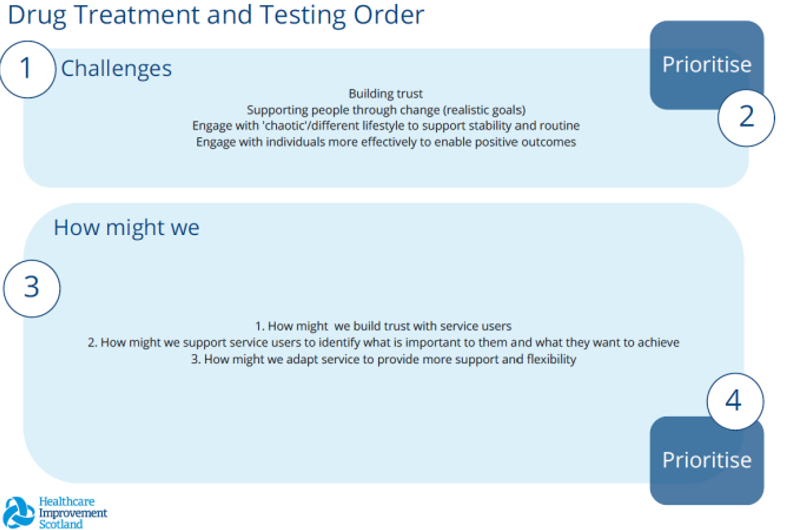Service Design: How Might We
About “How Might We” statements
“How might we” statements are designed to facilitate conversations around turning ideas into opportunities for improvement. There are a tool that is best suited when there has been prior engagement/discovery activities conducted and a sufficient amount of data has been gathered and analysed from several lenses. This will enable clarity around what the problem areas are. The “How Might We” templates support a two-stage process of identifying and articulating change ideas. The outputs and learning from previous engagement, such as personas, journey mapping, process mapping or interconnected systems mapping, can facilitate this exercise by defining the area for improvement.

Supporting resources for this tool
Supporting the protocol – how you might use this tool:
When looking at adapting and implementing a locally produced protocol, this tool can:
- Support ideas generation around improvements that can be made and how these can be achieved.
- Help with identifying areas where there might be challenges to achieving stated goals and allow for advance mitigation or problem solving.
- Promote the use of collaborative and positive ideas generation between mental health and substance use services.
Planning your workshop
Generally, only one workshop may be required, however this will be defined by the needs of your team. This workshop should be delivered (ideally) in person to allow for fuller engagement, collaboration and identification of key elements that are needed to facilitate change in a system. The resources section has further tools and guidance to support your planning.
Preparing for the workshop
- Collection and sharing of tools from previous exercises.
- An understanding of the focus and rationale for the exercise.
- Prompt questions to stimulate discussion.
What you need for the workshop
- Outputs from previous exercises, such as personas or journey maps.
- Resources such as post it notes, flip charts or wall charts.
- How might we templates.

Who should be involved
- Those involved in previous journey mapping or persona development workshops.
- Additional staff or stakeholders who can provide additional insight or sense checking.
- Dependent on number of participants in the workshop, working groups of 4 or 5.
What to do after the session
- Share the outcomes from the How Might We exercise with those who attended for sense checking and further input.
- Use the outcomes to assist with informing change ideas.
During the workshop
How Might We workshops work best when focused on previous insights or learning. Using how might we statements in the workshop will allow for reframing of these insights into opportunities for improvement, based on service user needs, rather than service provider conclusions.
This tool enables a collaborative approach to ideas generation and implementation, taking account of barriers and facilitators. These workshops should be interactive and make use of templates and worksheets.
How Might We workshops can be divided into sections of activities:
|
Activity 1: identify the of overarching principles of your services and group these into themes. Activity 2: using insights from activity 1 and the outputs from previous engagement activities (i.e. journey mapping or personas), identify some of the main challenges and rank these in order of priority. Challenges could include building support with service users, joint working, information sharing or maintaining engagement. These should then be used to collaboratively create how might we statements, such as:
Activity 3: use the previous activities to consider how you could deliver service improvements. In this activity, is will be worthwhile to consider the barriers and facilitators to achieving any identified improvements. |
 |
